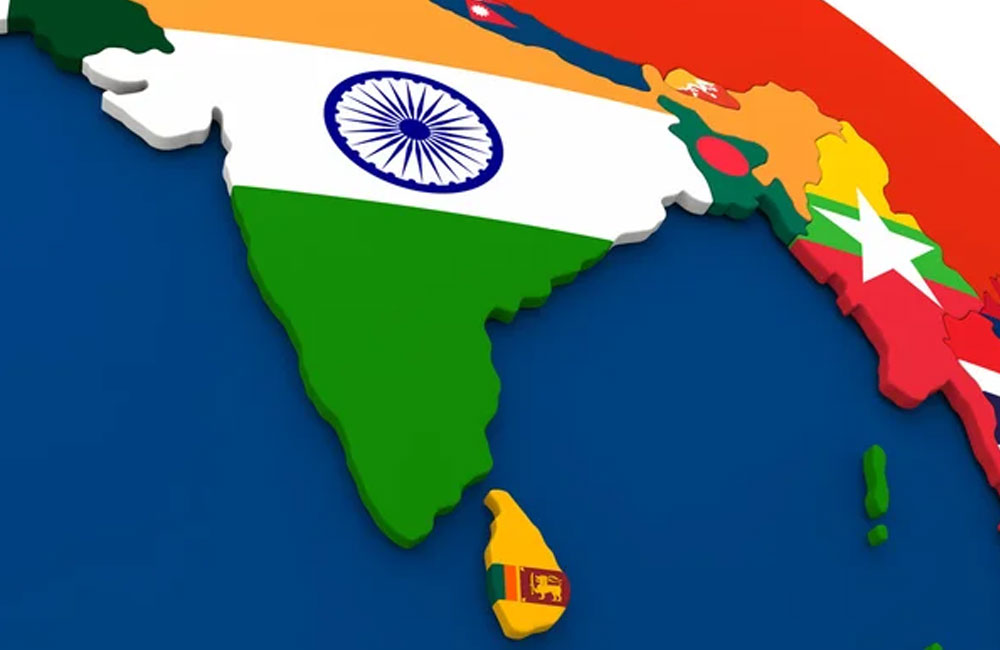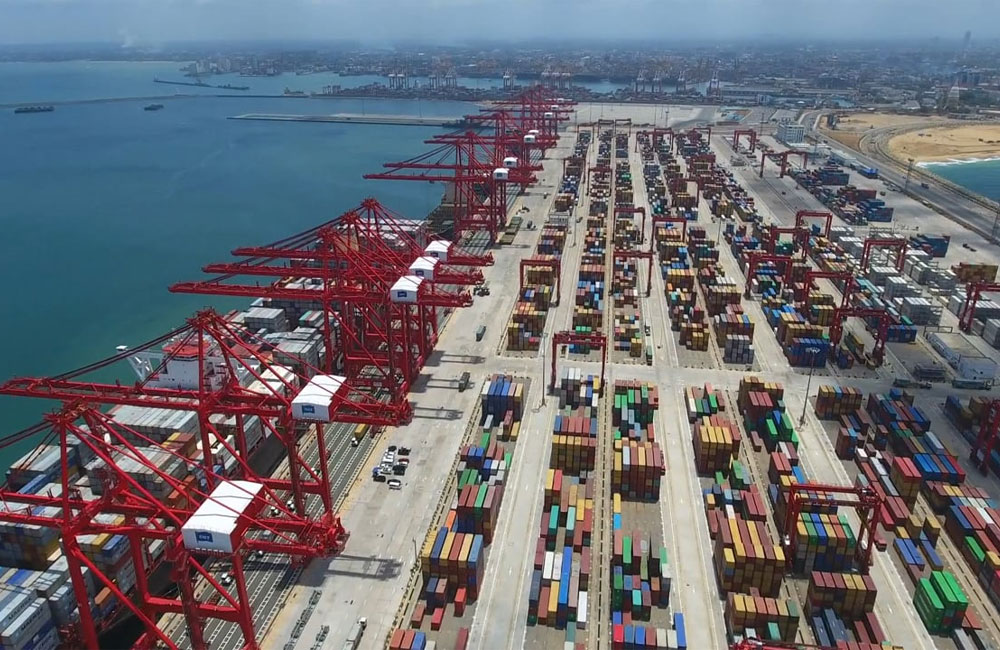News

Government-Led Suppression of Journalists and Media Institutions
The Sri Lanka Working Journalists’ Association strongly condemns the government’s attempt to suppress freedom of expression and press freedom through police action, including the unlawful summoning of journalist Tharindu Jayawardena to the Gampola Police Station in connection with his journalistic work, and the request made by the Sri Lanka Police to the Telecommunications Regulatory Commission of Sri Lanka (TRCSL) to cancel the broadcasting licence of the Hiru Media Network.
The police have instructed journalist Tharindu Jayawardena to appear at the Gampola Police Station at 11:00 a.m. on 26 December 2025 to provide a statement in relation to a complaint arising from his investigative reporting that exposed multiple instances of fraud and corruption connected to the Ambuluwawa Biodiversity Complex and its affiliated institutions. In a separate incident, the Hiru Media Network broadcast a news report on a cannabis raid, which revealed an alleged assault on a police officer involved in the operation, as well as reported links between the ownership of the cannabis plantation and parties connected to the National People’s Power (NPP) government. Claiming that the report constituted misinformation, the police have requested the TRCSL to revoke the broadcasting licence of the Hiru Media Network.
In both instances, it is evident that the police have intervened in the independent and lawful journalistic activities of both the journalist and the media institution with the intention of carrying out unlawful repression. If inaccurate reporting has occurred, there exist recognized professional standards, regulatory procedures, and legal mechanisms to address such matters. Instead, the government appears to be using the police to target journalists and media organizations that refuse to submit to political pressure.
These actions form part of a broader pattern of repression during the past 15 months of the NPP government, marked by increasing restrictions on media freedom and the constitutional right to freedom of speech and expression. The Sri Lanka Working Journalists’ Association expresses deep concern that the government, which came to power appearing to safeguard press freedom, is in fact a wolf in sheep’s clothing, demonstrating clear authoritarian tendencies.
We urge the government to refrain from these shameless attempts to enforce media repression through the expansion of a police-state approach, and instead to create an environment that genuinely protects press freedom, editorial independence, and journalistic ethics in Sri Lanka. Furthermore, we call upon all individuals and organizations who value freedom of expression to stand together against the growing pressure imposed on media freedom in Sri Lanka through repressive laws and state interference.


India’s Neighbourhood Diplomacy Tested and Proven after Cyclone Ditwah
India’s response to Cyclone Ditwah has underscored how New Delhi’s Neighbourhood First policy now operates not merely as diplomatic rhetoric but as an institutionalised crisis-response framework, extending from the Prime Minister’s Office to ministerial, military, and diplomatic levels.
The delivery of a special letter from Prime Minister Narendra Modi to President Anura Kumara Dissanayake, carried personally by External Affairs Minister Dr. S. Jaishankar, was a clear political signal that Sri Lanka’s recovery is viewed in India as both a humanitarian priority and a strategic responsibility.
As Sri Lanka now shifts its attention to the next phase, India has assured that India will extend all possible support as a trusted partner and a reliable friend. Prime Minister Modi stated in his letter
As in the past, we will stand shoulder to shoulder with you in rebuilding lives and ensuring resilience in Sri Lanka. In this context,he added.
The letter explicitly framed India’s intervention within its First Responder commitment, a doctrine that has steadily evolved since the Indian Ocean tsunami and gained operational maturity through recent regional disasters.
Continuing the goodwill gesture , India has committed a comprehensive reconstruction assistance package worth $ 450 million to support Sri Lanka’s recovery from the devastation caused by Cyclone Ditwah, reaffirming its role as the country’s first responder and closest regional partner, during External Affairs Minister Dr. S. Jaishankar’ recent Sri Lanka visist this week
Under ‘Operation Sagar Bandhu’, India deployed naval vessels, aircraft, and helicopters to transport relief supplies and emergency materials, while specialised teams supported search and rescue, medical response, and restoration of critical communications and connectivity. The speed and scale of this mobilisation reflected a preparedness that few regional actors can match.
Dr. Jaishankar’s visit elevated the assistance from emergency relief to structured rehabilitation planning. By arriving as the Prime Minister’s Special Envoy, the External Affairs Minister carried not only humanitarian goodwill but also a mandate to discuss the implementation of a comprehensive assistance package, signalling continuity beyond immediate disaster response.
This shift from relief to resilience marks a critical distinction between ad hoc aid and strategic partnership.
India’s engagement also highlights an important governance dimension. Sri Lanka’s cyclone response has exposed institutional coordination gaps and fiscal constraints. India’s assistance, therefore, operates as a stabilising external input helping bridge immediate capacity shortfalls while allowing Colombo to focus domestic resources on long-term recovery.
Unlike multilateral assistance, which often arrives with procedural delays, India’s bilateral support demonstrated operational flexibility and political decisiveness.
At the diplomatic level, the visit reaffirmed trust at a sensitive juncture in Sri Lanka’s economic recovery. The Prime Minister’s assurance that India will “stand shoulder to shoulder” in rebuilding efforts carries weight precisely because it echoes India’s past crisis interventions whether during fuel shortages, financial stress, or natural disasters.
Ultimately, India’s response to Cyclone Ditwah reinforces a broader regional reality: in times of crisis, geography and proximity matter. By aligning humanitarian action with diplomatic engagement, New Delhi has reinforced its role not only as Sri Lanka’s closest neighbour, but as its most dependable partner in moments of national stress.

Doctor Dead in Mirissa Drowning Incident
A medical doctor drowned while bathing in the sea off Mirissa yesterday afternoon (25), police sources confirmed.
The deceased has been identified as the Chief Medical Officer of the Weligama Walana District Hospital.
According to reports, the doctor was rescued from the water by local residents after he encountered difficulty while swimming and was rushed to the Matara Teaching Hospital, where he was later pronounced dead.
The victim, aged 49, had reportedly assumed duties at the Walana District Hospital only about a month ago.

Sri Lanka Introduces Dedicated Child-Friendly Transport for Protection Services
The government has rolled out a dedicated Child-Friendly Transport System to improve how children are transported to and from Provincial Probation and Child Protection Departments, Minister of Women and Children’s Affairs Saroja Savitri Paulraj announced on Wednesday.Speaking at an official ceremony held at the ministry premises in Battaramulla, the minister said the initiative was introduced in response to persistent concerns about children being transported in prison vehicles. She noted that such practices often exposed children to distressing situations, including travel in buses clearly marked for prison use, sharing space with adult offenders, and, in some cases, being transported alongside alleged perpetrators. These experiences, she said, amounted to secondary victimisation within the justice system.
Minister Paulraj pointed out that the Supreme Court had also underscored the need for a specialised transport mechanism in its ruling on Fundamental Rights case S.C. (F/R) 335/2010.
As an initial step, five newly acquired Toyota vans have been distributed to Provincial Councils in the Southern, Sabaragamuwa, Western, North Western and Northern Provinces. She further explained that under the government’s policy framework, “A Prosperous Country – A Beautiful Life”, and the thematic vision “A Safe Childhood, A Creative Future Generation”, Rs. 250 million was allocated in the current budget for child transport facilities. In line with this allocation, nine vehicles—one for each province—were officially handed over yesterday.
To ensure the smooth operation of the new system, the government has created 54 new provincial-level positions, despite the ongoing suspension of public sector recruitment. Each province will be assigned six officers, including drivers, caretakers and security personnel. Recruitment has already begun, and specialised training programmes will be provided immediately after appointments, the minister said.
The transport system will be closely monitored and further strengthened where necessary. Minister Paulraj added that the government intends to intensify interventions in women’s and children’s welfare in the coming year, with the aim of improving social indicators alongside economic progress.
She also noted that the issue of safely transporting children under court orders—whether victims, suspects or offenders—has been debated for years. Such children are often placed temporarily in safe houses or detention centres, and transport arrangements had previously relied on the Prisons Department, raising serious ethical and child protection concerns. Addressing these issues, she said, was a key reason behind establishing the new child-friendly transport mechanism.

A Nation United in Silence, 21 Years After the Tsunami
Sri Lankans observed a two-minute silence from 9:25 a.m. to 9:27 a.m. today (25) in remembrance of those who lost their lives in the devastating 2004 tsunami.
The disaster, which struck on 26 December 2004, killed over 35,000 people in Sri Lanka, left around 5,000 missing, and destroyed thousands of homes, livelihoods, and vital infrastructure.
Today marks 21 years since the tragedy, which was triggered by a powerful earthquake off northern Sumatra, Indonesia, sending massive waves across Sri Lanka and several other countries.
In honour of the victims, 26 December has been observed as National Safety Day since 2005. This year’s National Safety Day commemorations are being held today (26) from 8:30 a.m. to 11:00 a.m. at the Peraliya Tsunami Memorial in Galle, with multi-religious observances organised across districts, according to the Disaster Management Centre.
Meanwhile, to remember the victims of the Peraliya tsunami train disaster, the Department of Railways has arranged a commemorative train from Maradana to Matara at 6:30 a.m. today.

Prime Group stands with children of Police families affected by Cyclone Ditwah
In the aftermath of Cyclone Ditwah, while Sri Lanka Police officers worked tirelessly to safeguard lives and property across the country, many of their own families endured significant hardship.
Recognising this silent struggle, Prime Group launched a national-level initiative to support the children of affected police families, providing essential educational supplies and ensuring that their education could continue uninterrupted despite the challenges they faced.
Prime Group supplied essential school materials to children affected by Cyclone Ditwah, helping them resume their studies with confidence and dignity.
Through this initiative, undertaken as a responsible corporate citizen, 1000 students across Sri Lanka received support, with an investment of Rs. 10 million.
The donations were handed over at a ceremonial event held at Sri Lanka Police Headquarters, attended by the Public Security and Parliamentary Affairs Minister, Public Security Ministry senior officials, the Inspector General of Police,
Senior DIGs, and representatives of the Police Family Welfare Association and the Police Seva Vanitha Unit, along with police officers.
Prime Group was represented by its Chairman, Co-Chairperson, CEO, and senior management. The initiative was carried out under the coordination of Aruna Prasad Lekamge and Prof. Krishantha Pathiraja.
Prime Group Co-Chairperson Sandamini Perera said, “Prime Group is honoured to stand with police families and support their children, as a gesture of gratitude for the selfless service rendered to our country. Despite facing personal loss and hardship, the officers of the Sri Lanka Police continued to serve the nation with unwavering dedication during Cyclone Ditwah.
Their commitment to safeguarding communities under the most challenging circumstances deserves our deepest respect.”
As Prime Group celebrates 30 years of leadership in Sri Lanka’s real estate sector, the Group continues to reinforce its commitment to building resilient communities and supporting the nation beyond business.
This program underscores Prime Group’s long-standing belief in creating lasting value for families and standing with those who serve the country in times of need.


Sri Lanka Faces Reserve Risk amid Pro-Cyclical Rate Cuts
Sri Lanka’s ability to stabilise its foreign reserves is under renewed scrutiny, following the International Monetary Fund’s downward revision of the 2025 Net International Reserves (NIR). Originally projected to rise to $2.73 billion, reserves are now expected to reach only $2.16 billion by year end a shortfall of nearly $570 million against earlier forecasts. Analysts warn that the country’s fragile macroeconomic framework and recent monetary policies echo past missteps that precipitated debt crises.
The IMF’s revision highlights structural vulnerabilities. While the central bank has attempted to accumulate dollars, pro-cyclical rate cuts amid strong private credit growth limit its ability to collect reserves effectively. Historical lessons from 2015, 2018, and 2019 show that aggressive rate cuts without corresponding deflationary measures inevitably lead to currency depreciation and compromised debt repayment capacity.
Current policies constrain the Treasury’s ability to buy dollars independently, while excessive liquidity in domestic markets risks converting into import credits, further straining the balance of payments. Analysts suggest that the Treasury should operate with greater autonomy, including charging dollar taxes, conducting independent dollar purchases, and transferring central bank profits in foreign currency rather than rupees. Such steps could insulate reserves from politically driven monetary interventions.
Structural reforms are urgently needed. Setting up a dedicated dollar purchasing desk within the Treasury, potentially via commercial banks, would strengthen debt repayment capability without undermining central bank independence. Simultaneously, limiting domestic “buffers” and ensuring profits flow to the Treasury in foreign currency would reduce reliance on ad hoc rupee printing and minimize future default risks.
Failure to act could replicate the sequence that led to Sri Lanka’s previous default: severe rate cuts, aggressive tax reductions, and restrictive import policies, culminating in money printing, inflation spikes, and public backlash. Policymakers including the Finance Minister, President, and Parliament will bear direct accountability for currency depreciation, reserve depletion, and eventual debt distress.
Immediate corrective measures combining monetary prudence, Treasury independence, and structural dollar management can de-risk Sri Lanka’s economy, preventing a repeat of past crises while ensuring that macroeconomic policies do not remain reactive but resilient.

Chinese Communist Party Delegation Holds Talks with JVP Leadership in Colombo
A high-ranking delegation from the Communist Party of China (CPC) held discussions with the leadership of the Janatha Vimukthi Peramuna (JVP) at the party’s headquarters in Colombo on Wednesday , reaffirming ties between the two political parties.The Chinese delegation was led by Wang Junzheng, a member of the 20th Central Committee of the CPC and Secretary of the Party Committee of the Xizang Autonomous Region. Also present were Chinese Ambassador to Sri Lanka Qi Zhenhong and Peng Xiubin, Director-General of the East and South Asian Affairs Bureau of the International Department of the CPC Central Committee, along with other officials.
Representing the JVP were its General Secretary Tilvin Silva, Politburo member and Minister of Industry and Enterprise Development Sunil Handunneththi, Central Committee member and Minister of Trade, Commerce, Food Security and Cooperative Development Wasantha Samarasinghe, and several senior party figures.The discussions covered the history of cooperation between the CPC and the JVP, Sri Lanka’s current political developments, and collaborative initiatives carried out in 2025 under agreements reached during President Anura Kumara Dissanayake’s recent visit to China.
During the meeting, Tilvin Silva conveyed appreciation for the assistance extended by the Chinese government to Sri Lankans affected by Cyclone Ditwah. In response, Wang Junzheng reaffirmed that China would continue to provide support in the future.
Wang also referred to the successful conclusion of the 4th Plenary Session of the CPC’s 20th Central Committee held in October, as well as a related programme conducted in Sri Lanka earlier this week. He further shared perspectives on China’s ongoing discussions surrounding its 15th Five-Year Plan.
Both sides emphasized the importance of strengthening party-to-party engagement and explored ways to deepen cooperation between the CPC and the JVP in the year ahead.

Container Congestion at Colombo Port Risks Economic Momentum
More than 13,000 containers lying idle at the Port of Colombo is not merely a logistics issue—it is an unfolding economic risk at a moment when Sri Lanka can least afford inefficiency. As the country struggles to sustain fragile post-crisis growth, port congestion is quietly undermining trade competitiveness, revenue flows, and investor confidence.
A high-level meeting convened this week—with the Ports Minister, Customs leadership, Sri Lanka Ports Authority (SLPA) officials, and trade stakeholders—once again exposed a familiar pattern: extensive discussion, minimal decision-making. While operational suggestions were floated, no time-bound resolution emerged, reinforcing industry frustration that the port crisis has become institutionalised.
Colombo Port handles over 90% of Sri Lanka’s containerised trade and functions as a regional transshipment hub. Prolonged congestion increases demurrage charges, storage costs, and vessel delays, directly inflating import prices and eroding export margins. For an economy battling high inflation, weak consumer demand, and tight foreign exchange conditions, these inefficiencies translate into higher costs passed on to businesses and households.
One proposal at the meeting to convert a newly constructed parking yard into an additional Customs examination bay, particularly for foodstuff containers highlights a deeper structural issue: misaligned infrastructure utilisation. While physical capacity exists, regulatory and procedural bottlenecks prevent its effective deployment.
Customs officials suggested that containers awaiting clearance from Other Government Agencies (OGAs) be temporarily parked at the new yard. However, this merely relocates congestion rather than resolving it, unless OGA approvals themselves are streamlined. Multiple agencies operating in silos continue to delay cargo clearance, a problem repeatedly flagged but rarely corrected.
Another critical concern is the demand by the CHA Traders Association to permit outside-panel examinations at consignees’ warehouses. Such measures, already practised in competing regional ports, could drastically reduce yard congestion. Yet resistance persists, often due to outdated compliance frameworks and risk-averse administrative culture.
Perhaps most telling is the unresolved issue of 323 containers stalled due to objections raised at parliamentary and committee levels. The lack of clarity on this matter reflects a governance failure where political processes directly disrupt commercial logistics an alarming signal for international traders.
Sri Lanka’s ports must function as economic enablers, not choke points. Every day of delay weakens Colombo’s standing against regional competitors like India, Singapore, and emerging South Asian hubs aggressively modernising their clearance systems.
What the crisis demands is executive authority, digital integration, and inter-agency accountability not another cycle of meetings. Without immediate, decisive reform, port congestion risks becoming a silent drag on Sri Lanka’s recovery, undermining the very trade flows needed to stabilise the economy.

Sri Lankan National Detained in Tokyo Over Public Knife Incident
A Sri Lankan national has been arrested in Japan for an alleged breach of the country’s Swords and Firearms Control Law following an incident in central Tokyo, Japanese media reported.
The arrest took place on Monday after the man was observed holding a utility knife and causing injuries to himself in a public area near Shinagawa Station in Minato Ward. Witnesses reported that the individual was standing outside a Yoshinoya restaurant when the incident occurred.Police said the man sustained bleeding injuries to his hand and neck but remained conscious throughout the encounter. Law enforcement officers swiftly secured the surrounding area to ensure public safety and initiated dialogue with him.
After continued communication, officers were able to de-escalate the situation and convince the man to put down the knife, following which he was taken into custody for further investigation. Japanese authorities are continuing inquiries into the circumstances surrounding the incident.

Cyclone Ditwah Exposes Sri Lanka’s Economic and Governance Fault Lines
The economic fallout from Cyclone Ditwah is proving far deeper and more structurally damaging than initial disaster narratives suggested, with the International Labour Organisation (ILO) warning that nearly 16% of Sri Lanka’s GDP about $16 billion has been exposed to potential damage, largely concentrated in a handful of districts.
This concentration, the ILO cautions, risks uneven recovery and prolonged regional economic stagnation if policy responses remain fragmented and poorly coordinated.
In its Preliminary Employment Assessment, the ILO used night-time light data combined with flood and landslide mapping to estimate economic exposure. The analysis shows that 16.3% of observed economic activity, measured through illuminated zones, fell within disaster-affected areas highlighting the vulnerability of growth hubs rather than peripheral regions alone.
By contrast, the World Bank’s rapid damage assessment placed initial losses at $4.1 billion, or around 4% of GDP, a figure that excludes income losses, business disruptions, and long-term reconstruction costs.
While the Bank acknowledged that total recovery needs would be substantially higher, the sharp gap between the two estimates underscores methodological differences and, more critically, the absence of a unified national damage assessment framework.
Adding to the concern is the labour market impact, which the ILO describes as severe and immediate. Around 374,000 workers were employed in flood- and landslide-affected zones, with potential income losses estimated at $48 million per month if employment disruptions persist.
Agriculture and fisheries were among the hardest hit, with 23% of paddy land affected and tea output losses projected at up to 35%. Smallholder tea farmers who account for 70% of sector output have borne the brunt of the damage.
While the UNDP has repeatedly warned that climate-induced disasters will increasingly reverse development gains in countries with weak institutional coordination, Sri Lanka’s response to Ditwah appears to validate those concerns.
Relief delivery, livelihood restoration, and infrastructure rehabilitation have suffered from overlapping mandates, delayed data sharing, and weak local-central coordination, particularly in estate and rural economies.
From an IMF perspective, disaster shocks of this scale pose significant fiscal and macroeconomic risks, especially for a country already under a tight adjustment programme.
The Fund has consistently stressed that climate resilience, social protection targeting, and disaster-risk financing must be integrated into fiscal planning yet Ditwah exposed gaps in preparedness, insurance coverage, and rapid labour market support.
The ILO has called for emergency cash assistance, employment-intensive recovery programmes, and targeted MSME support, but it also stressed that such measures will only succeed if governance systems are strengthened. Without institutional reform and coordination, Sri Lanka risks turning a climate shock into a prolonged economic setback

Seven-Day Detention Granted for Suspects in Major Offshore Drug Seizure
The Police Narcotics Bureau (PNB) has obtained court approval to detain suspects arrested in connection with a major drug seizure uncovered during a Sri Lanka Navy operation at sea. The seven-day detention orders were issued after the suspects were produced before the Hulftsdorp Magistrate’s Court, police confirmed.The drugs were first detected on December 20 when Navy personnel inspected a multi-day fishing vessel operating off the southern coastline. The vessel, along with five individuals on board, was escorted to the Dikkowita Harbour on December 24. Subsequent searches at the harbour uncovered a large cache of narcotics, including 21 kilograms of heroin and 172 kilograms of crystal methamphetamine, commonly known as ‘Ice’.
Preliminary investigations indicate that the illicit cargo had been transferred to the fishing vessel from a foreign ship believed to be of Iranian origin. In a related development, the PNB arrested six additional suspects at the Mirissa Fisheries Harbour, who are suspected of assisting in bringing the drugs ashore.
Meanwhile, the Sri Lanka Navy reported that it has seized around 99 boats and multi-day fishing vessels used for narcotics trafficking so far this year, from January 1 to December 24. During the same period, approximately 360 suspects were taken into custody.
The Navy also revealed that more than 4,000 kilograms of illegal drugs have been intercepted in 2025, including nearly 3,000 kilograms of crystal methamphetamine and over 1,050 kilograms of heroin. In addition, authorities seized 33 kilograms of hashish, more than 1.6 million narcotic pills, and around 5,900 kilograms of locally and foreign-grown cannabis during the year.
Page 1 of 638